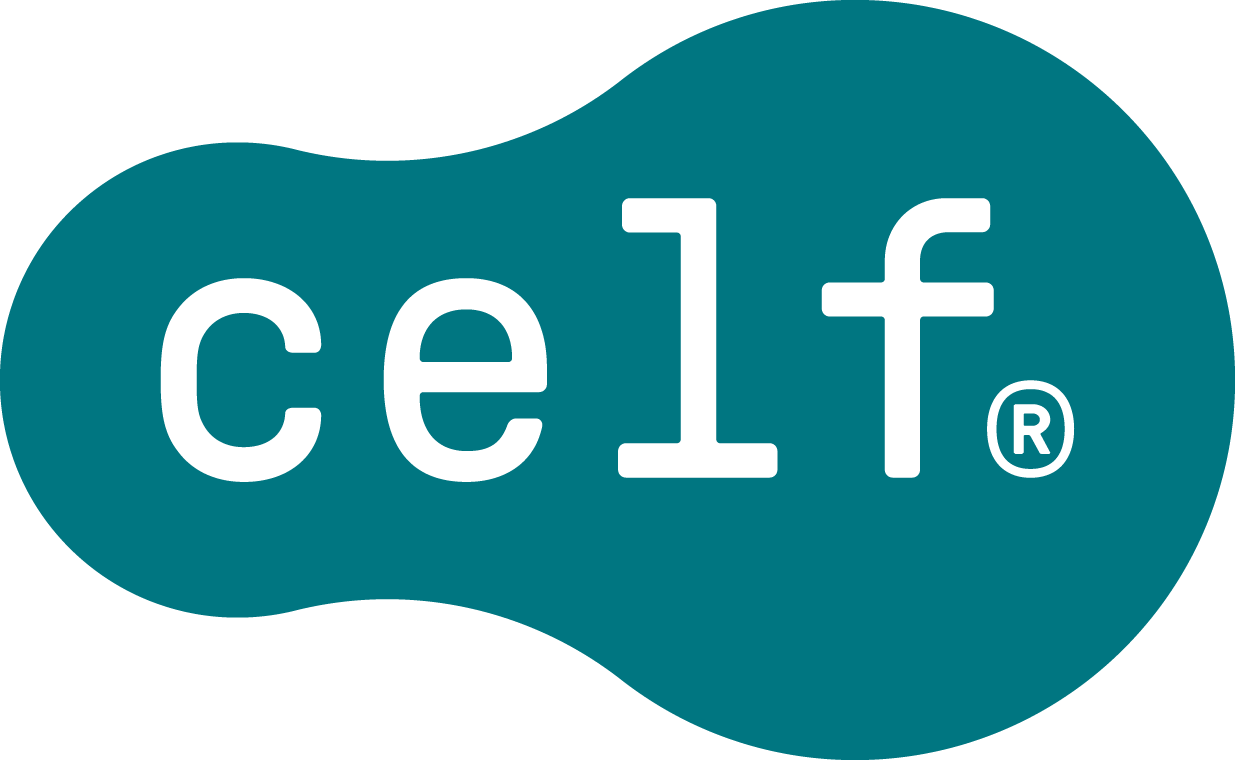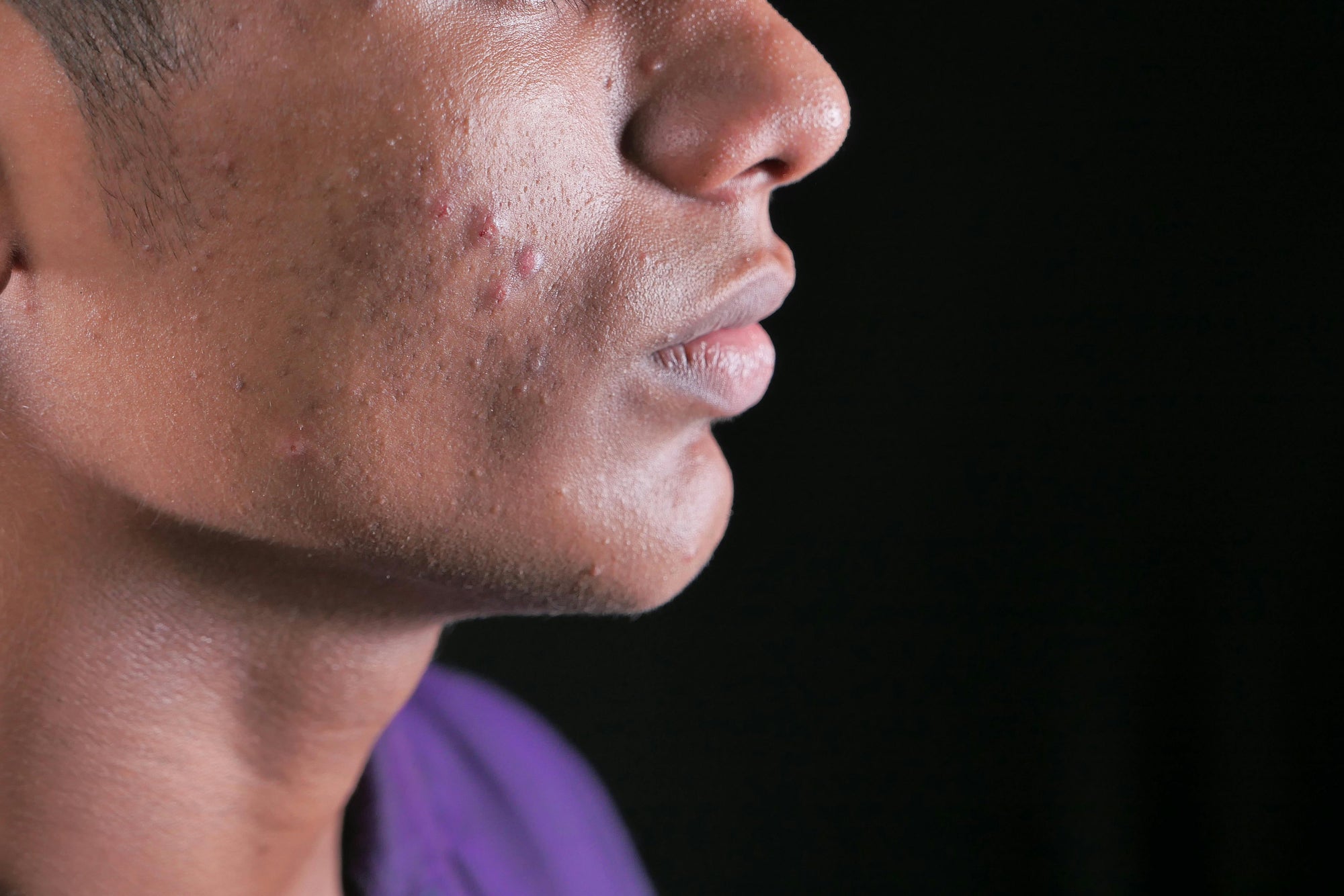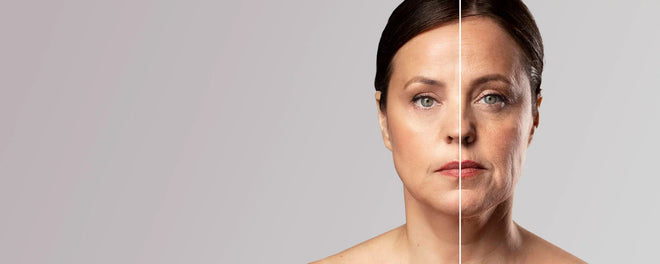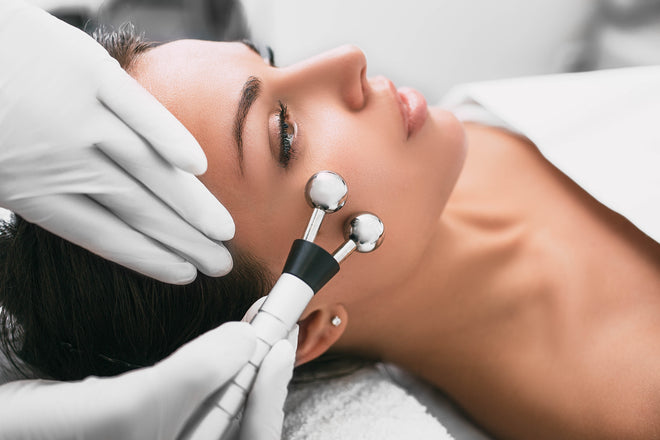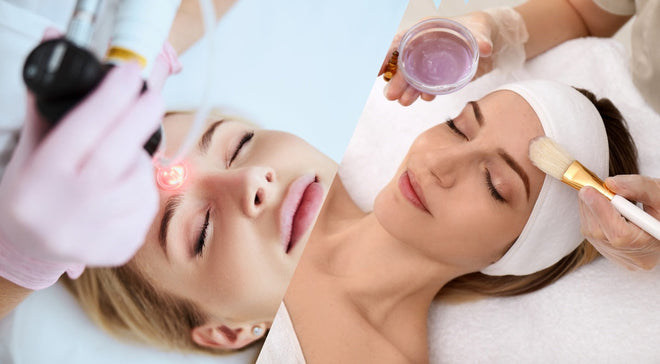Best Cleanser for Oily Skin: A Quick Guide
Table of Contents
How to Pick the Best Face Cleanser for Oily Skin: The Science Behind Achieving Balanced, Glowing Skin
1. Introduction: Why Choosing the Right Cleanser is the Most Important Step for Oily Skin
There are so many struggles with oily skin – the shine, the visible pores, the breakouts. All of that can be disheartening. The first step in identifying how to effectively manage your oily skin is to select the right face cleanser. Choosing the right face cleanser is not just to rid the skin of daily debris; it is necessary to effectively cleanse oily skin to achieve a proper balance and help the skin regain its optimal health. From a scientific perspective, oily skin often occurs with sebaceous glands that are overactive or with sebaceous domains secreting excessive sebum, which is a fatty substance, sometimes caused by an imbalanced skin microbiome
🔗 Source: Skin microbiome and sebaceous gland dysfunction.
Excess sebum can also clog the pores of the skin and contribute to issues such as blackheads, whiteheads, and acne. There is a harmful misconception that oily skin should be stripped of all oil. The ‘squeaky clean’ style of cleanser is punitive to the protective barrier of the skin and can lead to irritation and dehydration and may cause the skin to produce more oil as the body compensates for the loss when the barrier has been damaged. Selecting the right cleanser is crucial. While cleaning is part of an overall process for changing your skin, more than just cleansing is needed to really affect change. So, while certain innovative devices can certainly help increasingly support your skin's natural functions toward overall better health and radiance, the ‘cleanser’ ultimately has to be just one step in combination with other proactive measures.
See how CELF's Microvibration Therapy can help you establish natural balance beyond cleansing to improve firmness with a healthy appearance through a healthy glow - see more at CELF Beauty.
2. Know Your Skin: What is Causing Oily Skin?
When you know the 'why' behind oily skin, it gives you power over it. Oily skin is simply a combination of things:
-
Genetics: Your genes determine the activity of your sebaceous glands!
-
Hormones: Sizeable fluctuations in hormones, androgens being the biggest offender, stimulate the production of sebum (which we can see prominently during puberty, your menstrual cycles, stress).
-
Environment: Higher temperatures and humidity can increase your oiliness.
-
Habits: Other habits including using very harsh products, washing your face very frequently, or cleaning your face inadequately can all affect the skin balance.
Sebum plays an essential role - it's a natural lubricant, prevents water loss in the skin, and has antimicrobial properties. The issue arises in the overproduction of sebum, leading the skin to be too oily, which clogs pores and causes breakouts. When you understand what affects your skin's sebum production, it allows you to work with it, using products that work with your skin's natural functions and not against them. [Empowerment note]: Knowing your skin is the foundation for understanding how to personalize your skin care journey and maintain balance long-term.
3. What to Look for in a Cleanser for Oily Skin
Instead of being caught up in hype about a brand, look for the following formulation features in oily skin cleansers:
a. Non-Comedogenic Formulas:
A must. This refers to products which are designed not to clog pores. This is vital for oil-prone skin to avoid breakouts.
b. Gentle and sulphate-free surfactants:
Surfactants are cleansing agents; however, traditional and the harshest surfactants (i.e., SLS/SLES) strip the skin, compromise the barrier, and cause rebound oiliness. Instead of these, choose the gentlest surfactants (i.e., Coco-Glucoside) that are also sulphate-free. Gentle cleansing equals barrier health
(🔗 Source: The effect of surfactants on the skin).
c. pH about 5.5:
The skin is naturally slightly acidic (acid mantle, pH ~4.7-5.75), which protects against bacteria and maintains barrier function. The skin's alkaline pH is compromised by high pH cleansers. Enquire whether the product is ‘pH-balanced’.
d. Effective oil control but without drying:
The objective is to control excess sebum without stripping ingredients; low concentrations of salicylic acid, niacinamide, or clay can help regulate oil gently.
e. Light gel or foaming textures:
These textures remove excess oil, rinse cleanly, and leave a clean but not gritty feeling, making them broadly applicable for oily skin.
Finding the right cleanser sets you up for success. Advanced innovation in technology may then assist with additional skin care processes.
Find out how CELF supports and optimizes your experience.
4. Ingredients to Look For — and Why They Work
Knowing key ingredients will help you make informed selections when choosing a cleanser for oily skin:
-
Salicylic Acid (BHA): A lipophilic compound that can penetrate pores and dissolve clogs (sebum + dead cells). Salicylic acid is also anti-inflammatory, and concentrations should fall within the 0.5% to 2% range.
-
Niacinamide (Vitamin B3): Over time, niacinamide supports the regulation of sebum production, strengthens the skin barrier, shrinks the size of pores, and decreases inflammation. It is a versatile ingredient that is gentle on the skin.
-
Benzoyl Peroxide (Low Concentration): Low concentrations (2.5-5%) of Benzoyl Peroxide in cleansers can kill C. acnes (the bacteria responsible for acne). Benzoyl Peroxide should only be used as a cleanser for inflammatory acne and can be drying, so introduce it cautiously into the routine.
-
Green Tea Extract: Full of antioxidants (EGCG), it has anti-inflammatory properties. Studies show that it can potentially lessen sebum production (🔗 Source: Green tea in dermatology).
-
Clay (Kaolin, Bentonite, etc.): These natural minerals absorb excess oil and dirt on the skin, which can promote a mattifying effect without stripping the skin of moisture (or, at the very least, not usually). By understanding these ingredients, you can select cleansers that truly support your skin balance.
5. Cautionary Ingredients
Equally important to know is what to avoid or limit usage of in a cleanser:
-
High Concentrations of Denatured Alcohol: This may provide a temporary drying effect, but it is very damaging to the skin barrier and often causes rebound oiliness. Look for ingredient lists with Alcohol Denat. or SD Alcohol among the top 5 listed ingredients on product packaging.
-
Harsh Physical Exfoliants: Any scrub with large and jagged parts (e.g., crushed nut shell particles) causes micro-tears in the skin, inflammation, and damage to the barrier. Choose to use gentle chemical exfoliants or controlled methods.
-
Fragrances (Synthetic or Natural): Popular sensitizers (listed as Fragrance/Parfum or essential oils) can create irritation, reddening, and/or allergy — especially if oily skin can also be reactive. If you get a reaction to scents, always choose one that is fragrance-free. Avoiding all of these helps ensure a healthy skin barrier, which is crucial for managing oily skin.
6. How to Cleanse Properly (Step-by-Step Ritual)
The correct washing ritual can maximize the results of your cleanser.
-
Step 1: Remove Makeup/Sunscreen First (Double Cleanse): In the p.m., use an oil cleanser, balm, or micellar water to remove your makeup/SPF first before the main cleanse.
-
Step 2: Use Lukewarm Water: Do not use hot water (stripping) or very cold water (less effective) — tepid water is best.
-
Step 3: Apply Cleanser with Fingertips: Using your fingertips, gently massage a small amount onto damp skin for 30–60 seconds. Familiarize yourself with the areas that are more oily, but do not scrub.
-
Step 4: Rinse with Water: Rinse thoroughly and ensure there is no residue left on your skin, as this can cause irritation.
-
Step 5: Dry Gently by Patting: If possible, use a fresh, clean, and soft towel. Avoid rubbing.
-
Step 6: Follow Immediately with Hydration: Apply your serums and moisturisers to slightly damp skin in order to lock in hydration.
Level up your cleansing ritual with CELF's Microvibration Therapy. Using Microvibration Therapy after cleansing gently and powerfully increases circulation, encourages fibroblasts to create collagen, supports gentle exfoliation, and importantly increases penetration of serum into the skin for more lifted, brighter-looking skin.
7. Common Cleansing Mistakes for Oily Skin to Avoid
Avoid these habits that can block your progress:
-
Cleansing your face too often: Cleansing your skin more than two times daily strips your skin's natural oils and can worsen oiliness. Aim to cleanse only twice daily (once in the morning and once at night).
-
Not Hydrating: Your skin needs hydration (water). Your skin can produce more oils (sebum) when dehydrated. Use lightweight, oil-free, non-comedogenic (i.e., won't clog pores) moisturiser.
-
The ‘Squeaky-clean’ goal: When your skin feels tight after cleansing, it serves as a signal of barrier disruption rather than cleanliness. Being balanced and comfortable is the goal!
-
Not adjusting for seasons: Your skin's needs change. You may want a gentler or lighter cleanser in summer; in winter, although your skin may feel drier, you may want something a little more hydrating but still considerate of your oily condition.
-
Using potent spot treatments on the entire face: Treatment products for blemishes in specific areas should really only be used for spot treatment. You do not want to irritate the larger area. Avoiding these variables should allow your skincare routine to do its job.
8. Building the Ultimate Skincare Routine for Oily Skin
The most important thing is consistency. Here is a very basic framework:
-
Morning (a.m.): Gentle Cleanser, Hydrating Toner (optional), Target Serum (e.g., Niacinamide, Vitamin C), Lightweight oil-free moisturiser, Broad Spectrum sunscreen (SPF 30+, non-comedogenic at least; for best results, consider metallics).
-
Evening (p.m.): Double Cleanse (Oil/Balm/Micellar Water + Gentle Cleanser), Exfoliant (2–3x/week, e.g., BHA/AHA).
9. Conclusion:
Your Journey of Getting Balanced, Radiant Skin Starts Now!
Choosing a cleanser is the first and primary step in managing oily skin. Once you understand the science behind what makes a cleanser effective, what to look for, and how to use it, while avoiding common mistakes, you will gain control of your skincare journey.
Remember: Achieving balanced skin is a process, so be patient, stay consistent, and enjoy the process along the way. Smart product choices combined with cutting-edge technology like CELF Microvibration Therapy provide a real benefit. You tackle cleansing while simultaneously enhancing deeper functions of the skin with increased circulation, collagen production, product penetration, and skin cell turnover, resulting in visibly healthier, calmer, and glowing skin.
Are you ready to enhance your cleanser products and unlock the potential of your skin? Explore CELF Microvibration Therapy for calmer, firmer, and glowier skin here.
12. FAQ Section: Quick-Hits for Reader Convenience
-
Q: How often should you wash oily skin? A: Twice a day (a.m./p.m.) is recommended, but washing constantly will backfire on you.
-
Q: Can oil cleansers work for oily skin? A: Absolutely, as a first cleanse as part of double cleansing to help remove makeup/SPF efficiently. Then use your water-based cleanser.
-
Q: Should I exfoliate daily if my skin is oily? A: No, daily exfoliation tends to be overly aggressive. Stick to 2–3 times per week, going easy with gentle methods.
-
Q: How can CELF Microvibration Therapy assist oily skin? A: CELF improves circulation, provides very gentle exfoliation, helps serum penetration, and promotes collagen stimulation. Providing this holistic support will give your skin the healthy balance and radiant finish it deserves that complements your oily skin routine. Learn more about all the benefits of CELF.
FAQs
1. Which face wash is best for oily skin and glowing skin?
A gentle gel-based or foaming cleanser with ingredients like salicylic acid, niacinamide, or tea tree oil is ideal. These help control excess oil while boosting skin clarity and radiance without stripping moisture.
2. What type of cleanser is best for oily and acne-prone skin?
For oily, acne-prone skin, choose non-comedogenic cleansers with exfoliating acids like salicylic acid or benzoyl peroxide. These unclog pores, reduce breakouts, and control sebum production.
3. What facial is best for oily and glowing skin?
Opt for deep-cleansing facials that include clay masks, steam therapy, or mild chemical exfoliation (like AHAs/BHAs). These help detox pores and promote a healthy glow for oily skin types.
4. How can I get clear, glowing skin if I have oily skin?
Follow a skincare routine with a pH-balanced cleanser, lightweight moisturizer, and non-oily sunscreen. Exfoliate 2–3 times weekly and use ingredients like niacinamide and hyaluronic acid to keep skin hydrated and glowing.
5. What cleanser do dermatologists recommend for oily skin?
Dermatologists often recommend CeraVe Foaming Cleanser, La Roche-Posay Effaclar Gel, or Neutrogena Oil-Free Acne Wash due to their oil-controlling and acne-fighting properties, without irritating the skin.
6. What’s the best cleanser for oily skin and large pores?
Use a gel-based cleanser with salicylic acid or charcoal, which can penetrate deep into pores, remove impurities, and minimize the appearance of large pores.
7. Is there a quiz to help choose the right face wash for oily skin?
Yes! Several skincare brands and dermatology sites offer skin type quizzes that match you with the best cleanser based on oiliness, sensitivity, and skin concerns like acne or dullness.
8. Can cleansers improve oily skin overnight?
While no cleanser offers overnight transformation, using a targeted oil-balancing formula consistently can significantly reduce excess shine and breakouts within a few weeks.
9. What are the types of cleansers for different skin types?
-
Oily skin: Gel or foaming cleansers
-
Dry skin: Cream or milk cleansers
-
Sensitive skin: Micellar water or fragrance-free cleansers
-
Combination skin: Gentle foaming or balancing cleansers
10. Are exfoliating cleansers good for oily skin?
Yes, but use them moderately—2–3 times per week. Look for chemical exfoliants (like AHA/BHA) rather than physical scrubs, which can irritate oily skin and trigger more oil production.
